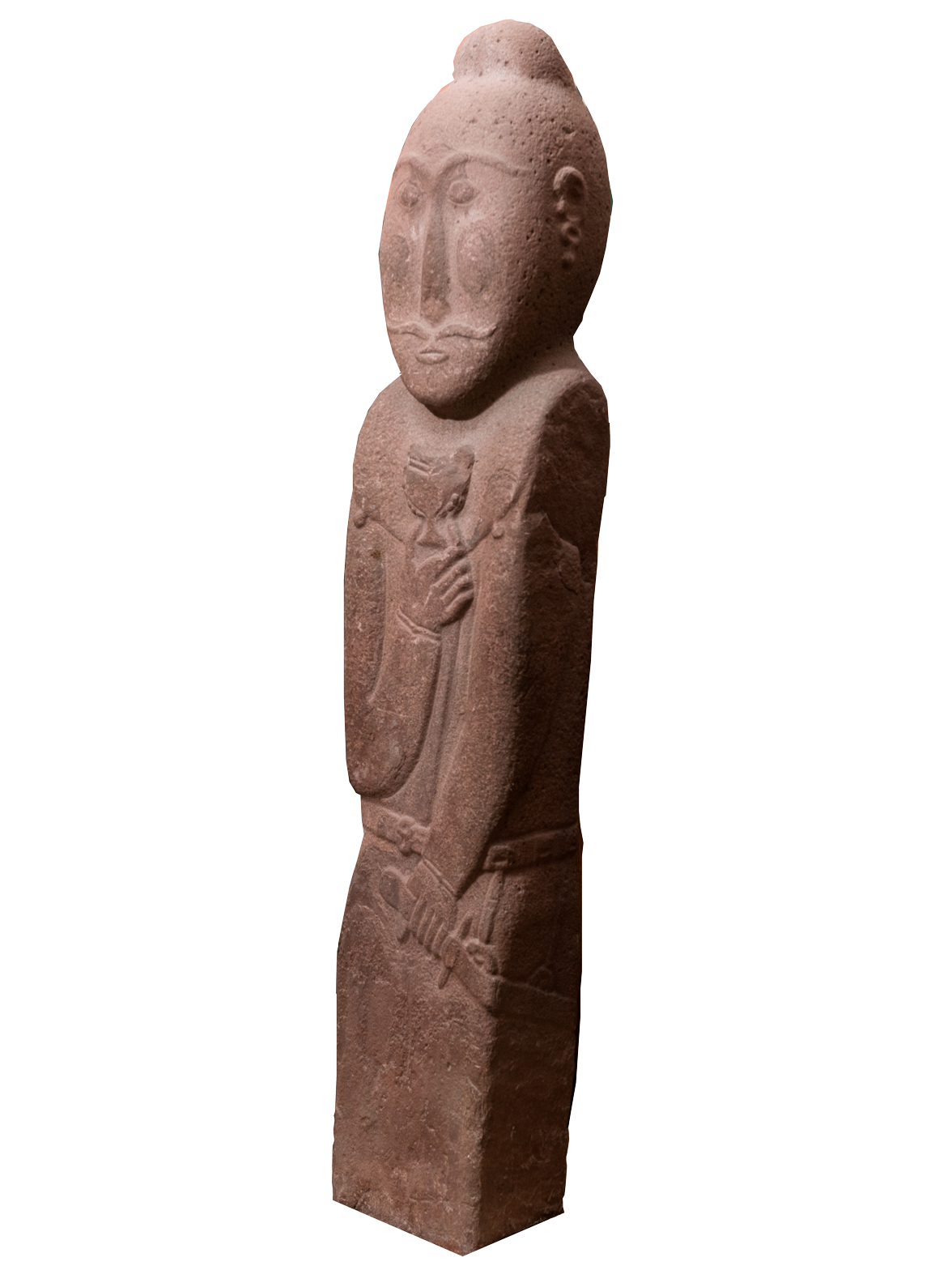Warrior Statue

In the second half of the I millennium BC history of Southern Siberia is particularly connected with the development of many Turkic tribes of Central Asia. Big nomads unions - The first and later the Second Turkic Khaganate were established in this period. The warrior statue was carved of a stone column of a rectangular shape in section. The head of an oval shape is emphasized on the monolithic statue. On the face relief eyes, a nose, a mouth, brows, a long curved moustache are marked accurately. Ears are pierced with earrings in a shape of a broken ring with a pendant. Face features have strongly marked mongolian character. The right hand, bend near the elbow, on the level of a chest is caring a cup with two fingers, the left hand is leaned on the handle of a saber that is hanged to the waist belt. The belt has a well marked buckle in the central part and plates with holes of rectangular shape with long separate belts put through them. On the left side of the statue a saber is fixed with these belts, probably put to the scabbard, on the right – a bag with ornament in shape of a semi-circle with open-ended and enveloped inside endings. A straight knife is hanged on the same belt. Objects depicted on statues are analogical and contemporary to objects found in the under barrow burials placed nearby. It seems to be that stone fences and statues are the places of commemorative sacrifices, made in memory of the buried in the nearby barrows.
Exhibits’ purpose of use – statues were placed not on the burial places, but separately – being a part of a particular commemorative complex. Statues were depicting men and were put as a memory about the dead. There were rituals of the ancestors cult held in front of them.
Stone anthropomorphic statues are a characteristic trait of burial- commemorative ritual of Turkic time. They are widespread on territories of Altai, Tuva, Kazakhstan and Mongolia.
